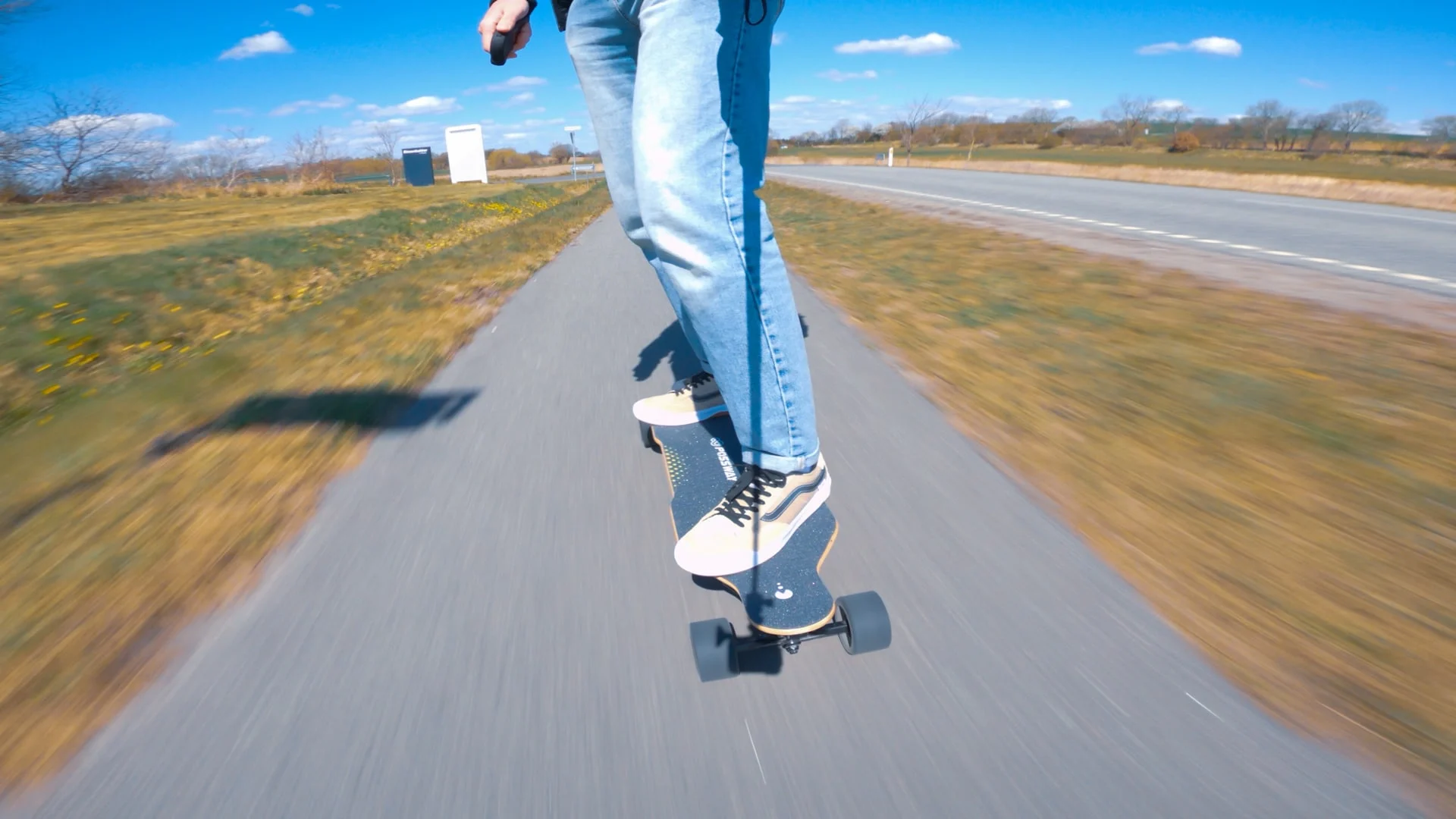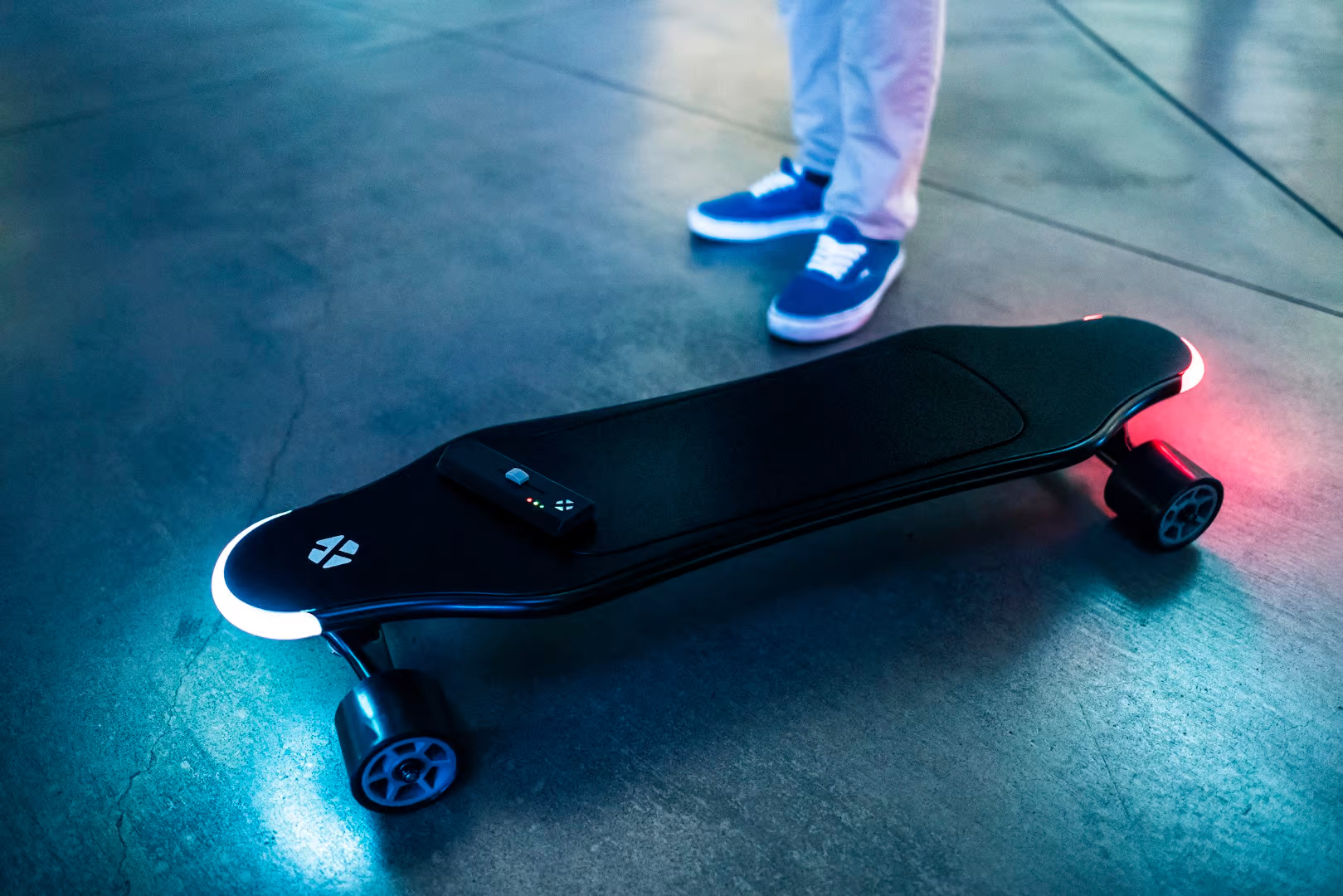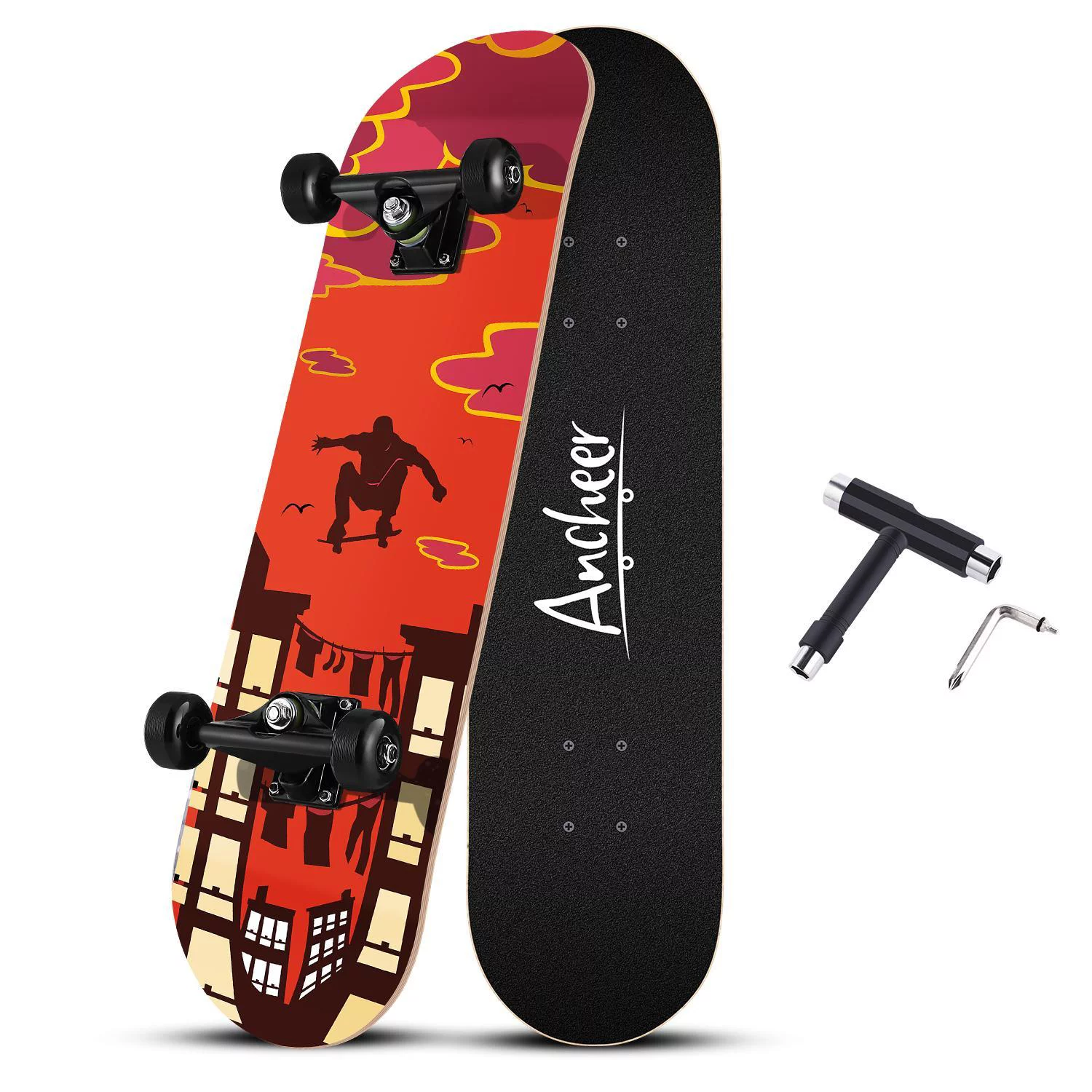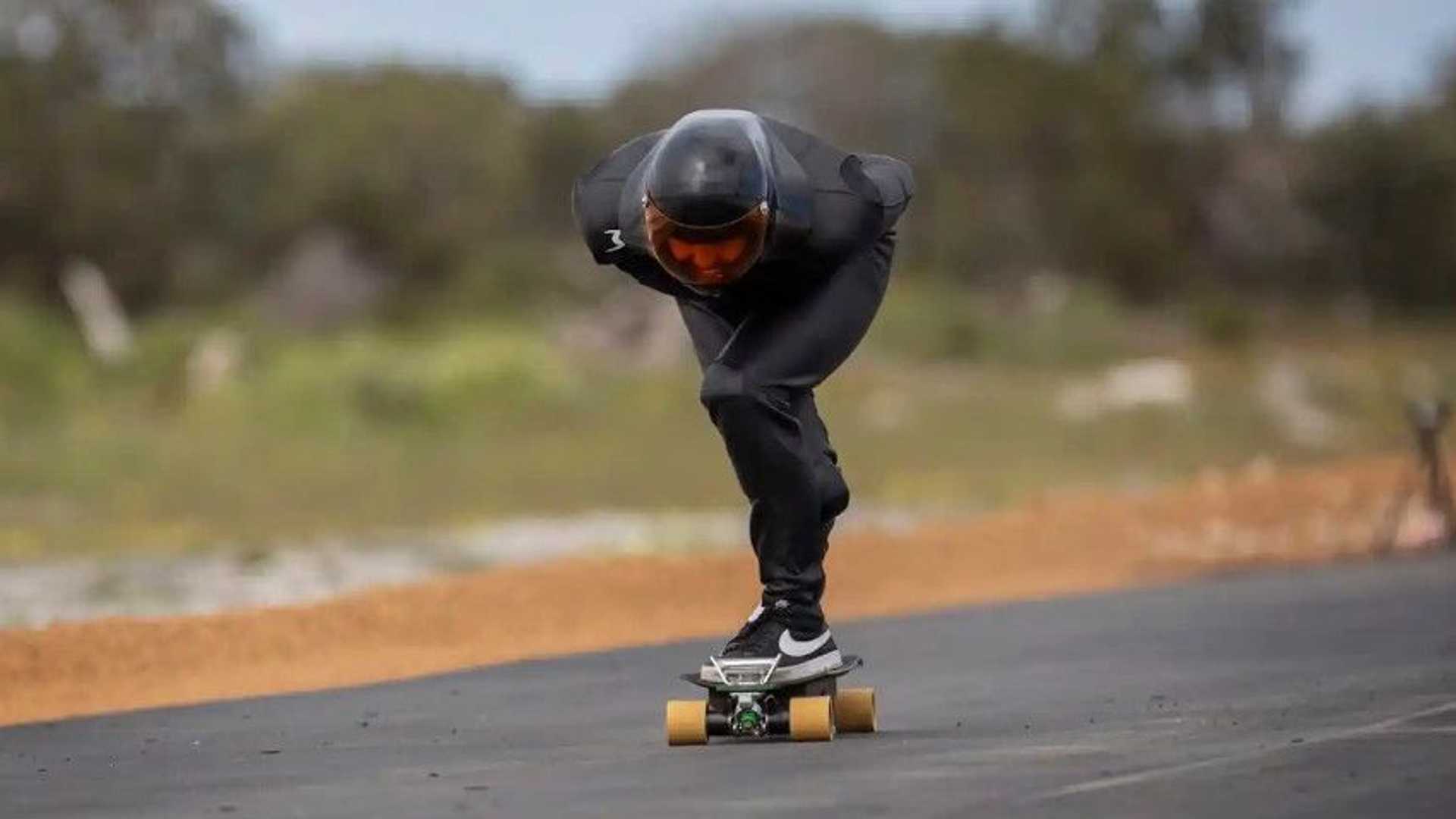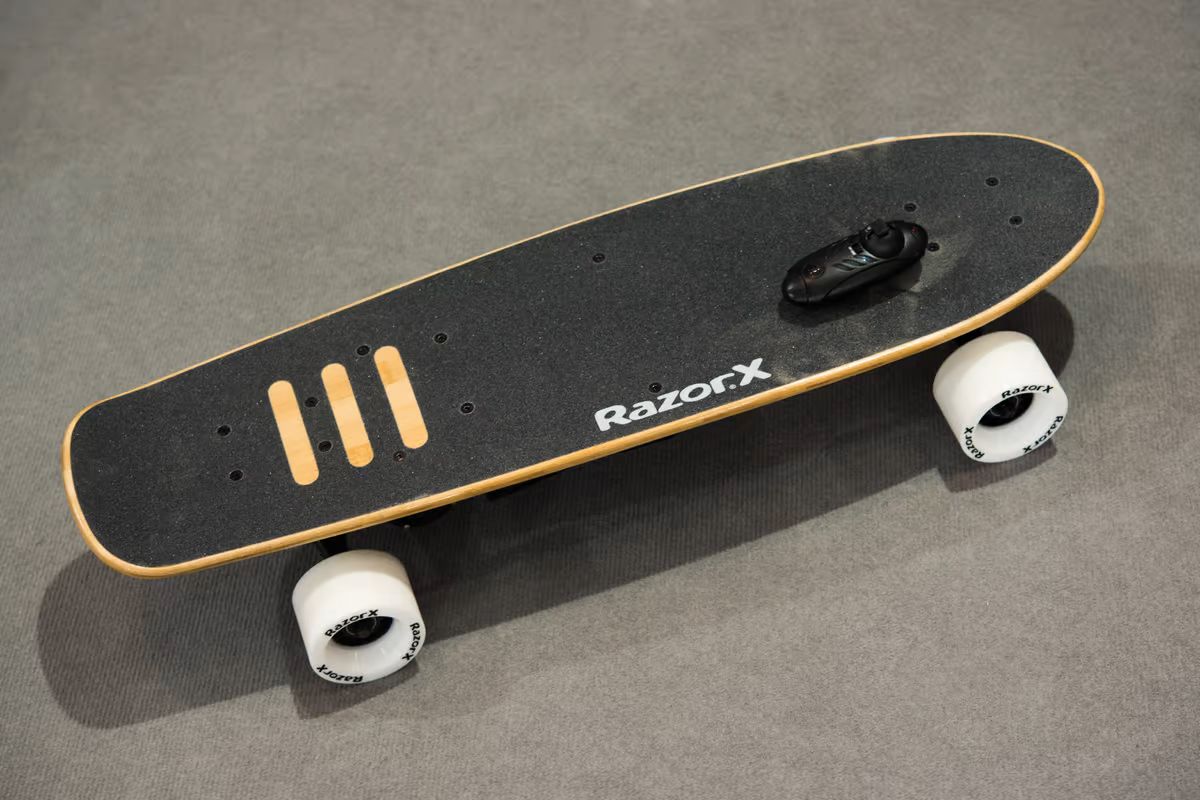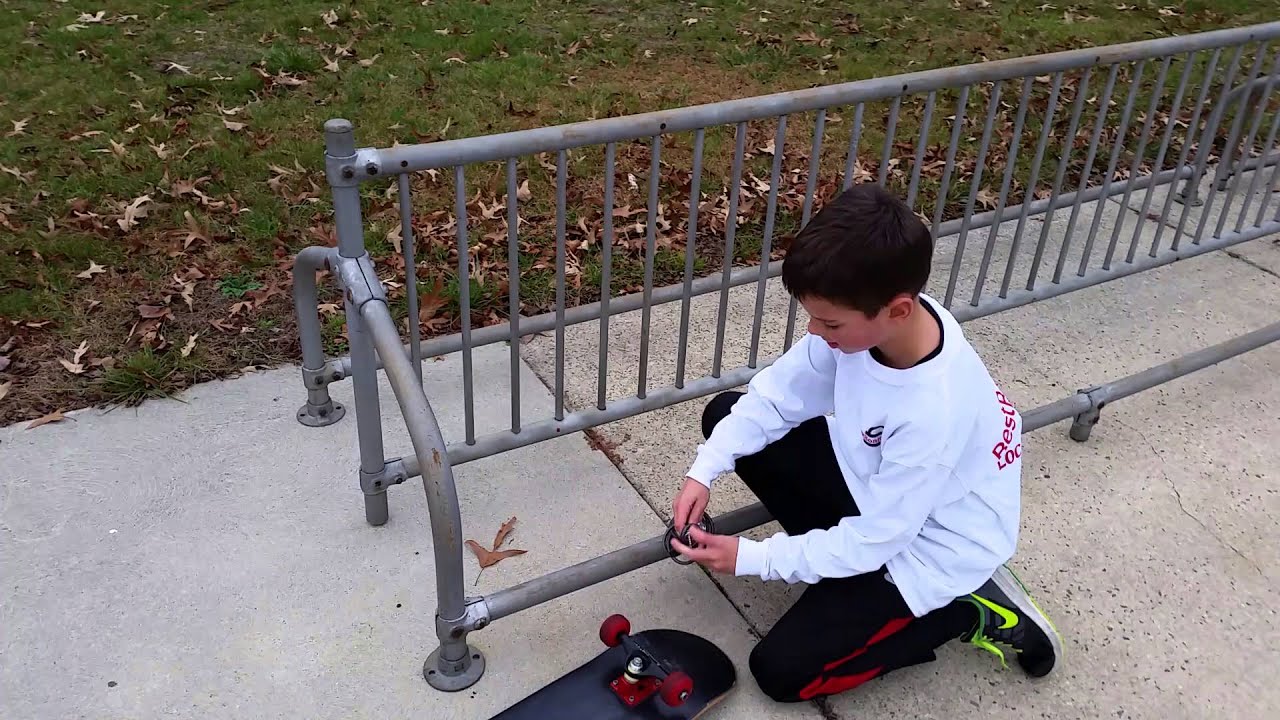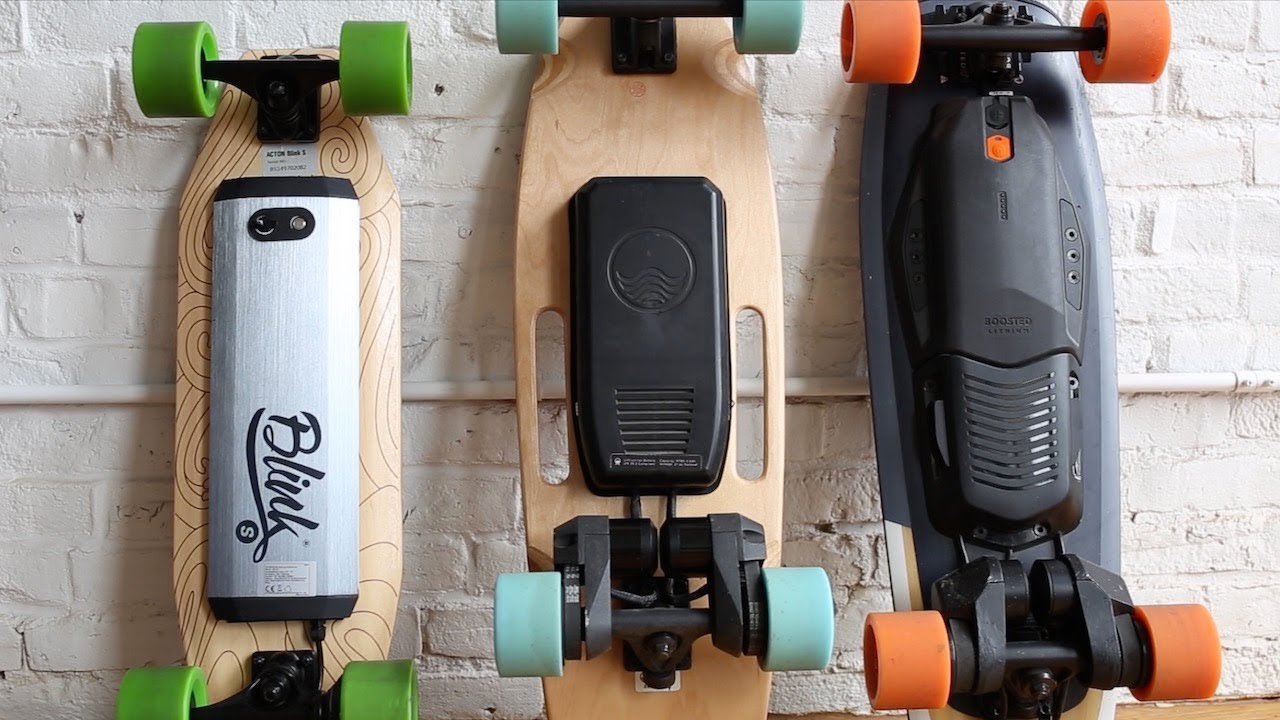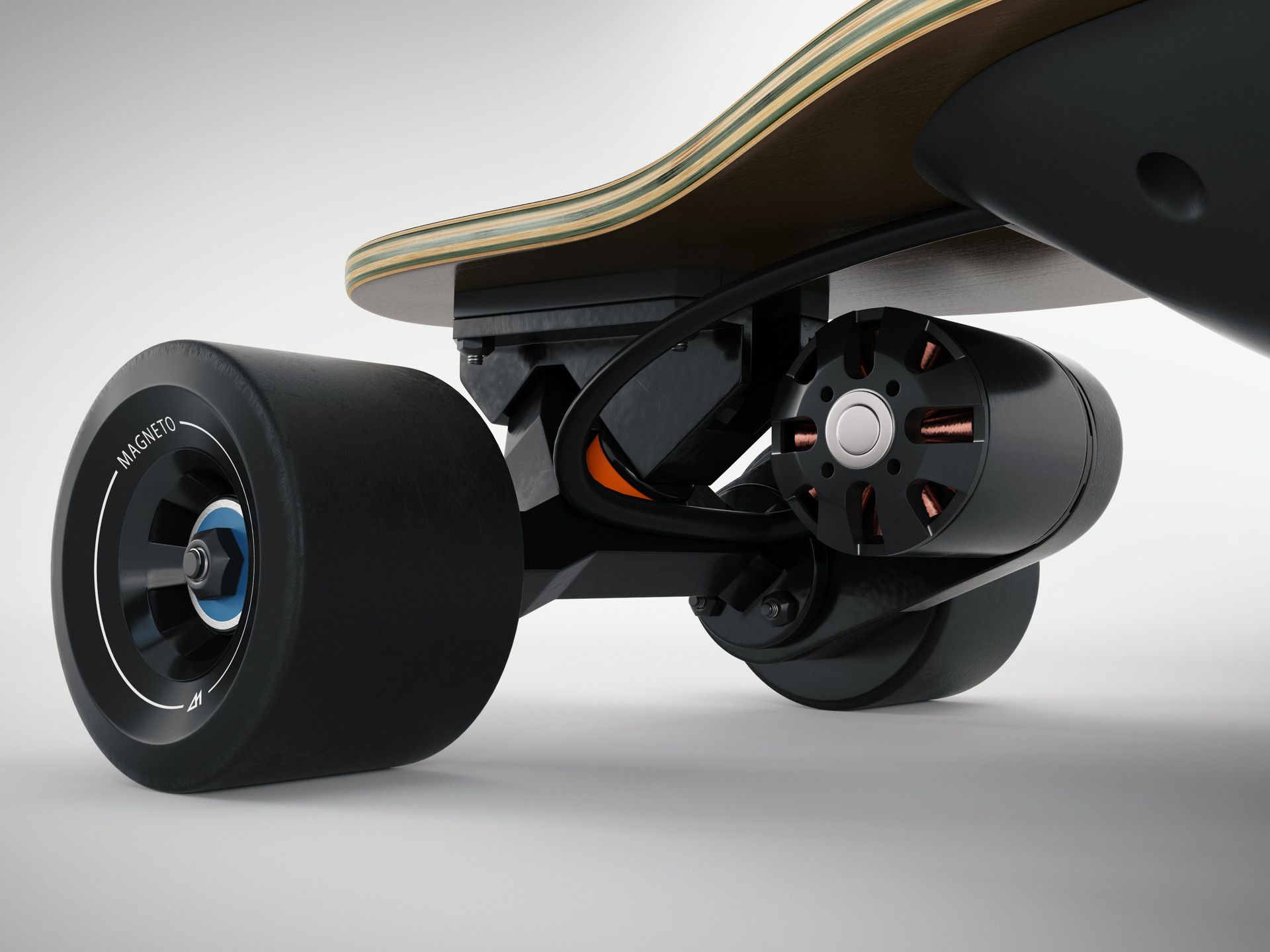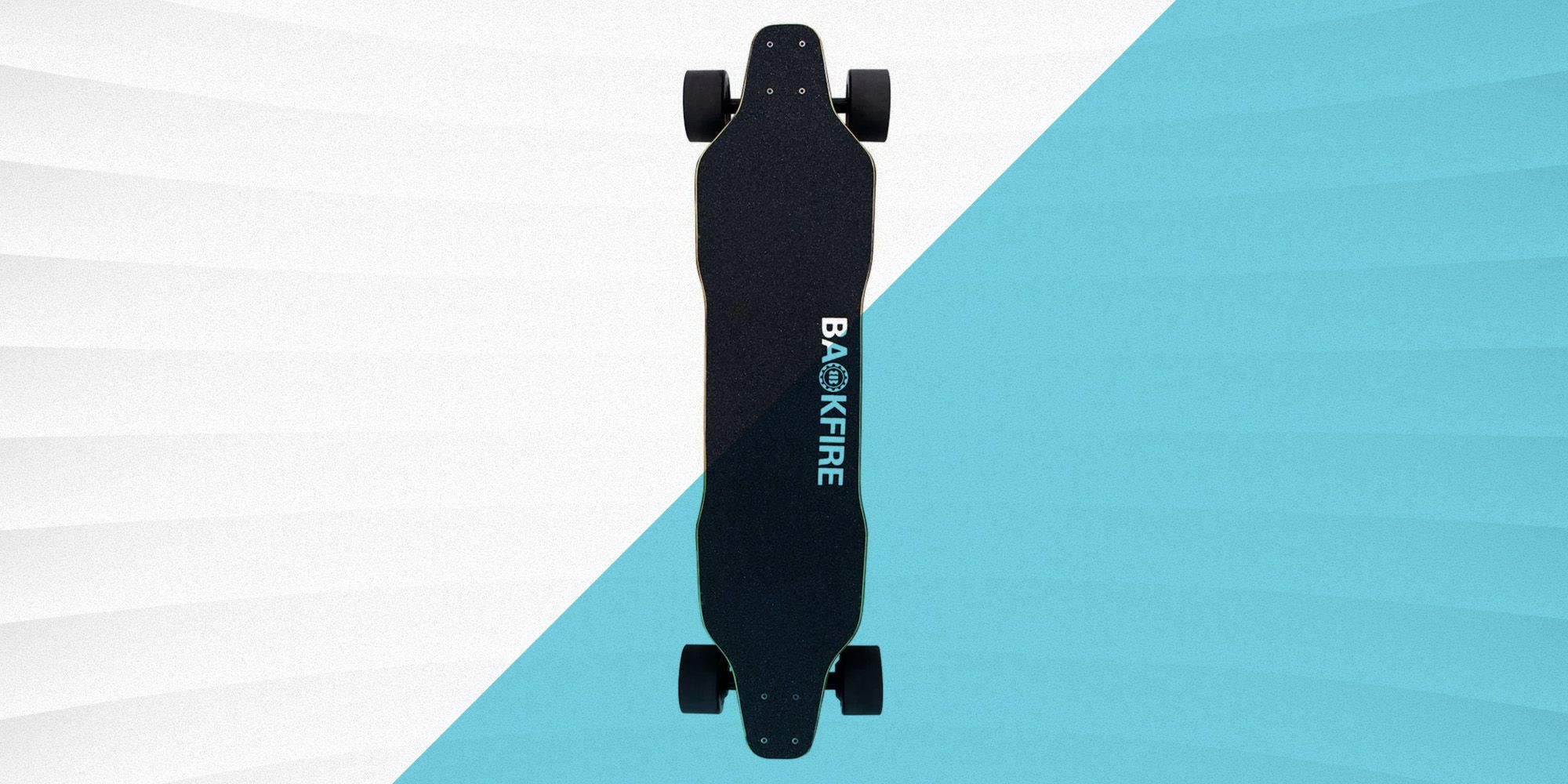Introduction
Welcome to the exciting world of electric skateboarding! If you’re looking for a fun and eco-friendly way to commute or simply enjoy the thrill of skateboarding, an electric skateboard is a perfect choice. With the recent advancements in technology, electric skateboards have become increasingly popular among riders of all levels.
Whether you’re a beginner or an experienced skateboarder, this guide will provide you with the essential knowledge and skills needed to safely and confidently ride an electric skateboard. From choosing the right board to mastering the basic techniques, we’ve got you covered.
Before we dive into the details, it’s important to note that electric skateboarding, like any other sport, comes with risks. Safety should always be your top priority. Make sure to wear appropriate safety gear, such as a helmet, knee pads, and elbow pads, to protect yourself from potential injuries.
In this guide, we will walk you through the process of selecting the right electric skateboard, familiarizing yourself with its features, mastering the fundamental riding techniques, navigating different terrains, managing the battery, and important maintenance tips to keep your board in top condition.
So, whether you’re a beginner just starting out or a seasoned rider looking to improve your skills, let’s strap on our helmets and dive into the exciting world of electric skateboarding!
Choosing the Right Electric Skateboard
When it comes to choosing an electric skateboard, there are several factors to consider to ensure you find the perfect board for your needs. Let’s take a look at some key factors to keep in mind:
1. Riding Style: Consider your riding style and intended use of the electric skateboard. Are you looking for a board for commuting, off-road adventures, or simply cruising around the neighborhood? Different boards are designed for different purposes, so understanding your riding style will help you narrow down your options.
2. Motor and Battery: The motor and battery of an electric skateboard determine its speed, range, and power. If you’re looking for a fast and exhilarating ride, opt for a board with a higher motor power and larger battery capacity. However, if you prioritize portability and compactness, consider a board with a smaller motor and battery.
3. Deck Size and Shape: The size and shape of the deck can significantly impact your riding experience. A wider deck provides more stability, while a narrower deck offers better maneuverability. Consider your body size and riding preferences when choosing the deck size and shape.
4. Wheels and Suspension: The wheels and suspension system of an electric skateboard play a crucial role in the overall comfort and performance. Larger wheels provide a smoother ride over rough terrain, while smaller wheels offer greater maneuverability. Similarly, a good suspension system absorbs shocks and vibrations, enhancing your overall riding experience.
5. Weight and Portability: If you plan on carrying your electric skateboard frequently or using it for commuting, weight and portability become essential factors to consider. Lighter and more compact boards are easier to carry and store, making them more convenient for everyday use.
6. Price and Budget: Set a budget for your electric skateboard purchase and choose a board that falls within your price range. Keep in mind that higher-end boards with advanced features may come at a higher price tag, so it’s important to strike a balance between your budget and desired features.
By considering these factors, you can narrow down your options and find an electric skateboard that suits your riding style, preferences, and budget. Remember to research and read reviews, as they can provide valuable insights from fellow riders. Now that you have an idea of what to look for, let’s dive into the next section to learn more about the safety gear and precautions you need to take when riding an electric skateboard.
Safety Gear and Precautions
When it comes to electric skateboarding, safety should always be your top priority. Here are some essential safety gear and precautions to ensure a safe and enjoyable riding experience:
1. Helmet: Wearing a properly fitting helmet is crucial to protect your head and reduce the risk of head injuries in case of a fall or collision. Choose a certified helmet designed specifically for skateboarding or cycling for maximum protection.
2. Knee and Elbow Pads: Knee and elbow pads provide additional protection to vulnerable areas of your body. They can prevent abrasions, bruises, and more serious injuries in case of a fall or impact. Look for knee and elbow pads made of durable materials that allow for flexibility and movement.
3. Wrist Guards: Wrist guards are designed to protect your wrists from fractures and sprains. They provide support and stability, especially during high-speed rides or when performing tricks. Invest in a pair of wrist guards that fit well and offer adequate protection.
4. Reflective Clothing: When riding in low-light conditions or at night, it’s essential to enhance your visibility to other road users. Wear reflective clothing or accessories, such as reflective vests or bands, to make yourself more visible and reduce the risk of accidents.
5. Proper Footwear: Choose skate shoes or sneakers with good grip and support to ensure stability and control while riding. Avoid loose-fitting or open-toed shoes that can impede your ability to ride safely.
6. Check Your Surroundings: Before you start riding, always check your surroundings for potential hazards, such as potholes, debris, or uneven surfaces. Be aware of your surroundings throughout your ride and anticipate any obstacles or dangers that may come your way.
7. Start Slow and Practice: If you’re new to electric skateboarding, start with slow speeds and practice in a safe and open area. Get familiar with the board’s controls and gradually progress to higher speeds and more challenging terrains as you gain confidence and experience.
8. Observe Traffic Rules: When riding in public spaces, it’s important to obey traffic rules, just like you would with any other vehicle. This includes stopping at traffic signals, yielding to pedestrians, and following designated bike lanes or paths.
9. Ride Defensively: Always assume that other road users may not see or anticipate your presence. Be prepared to react quickly and defensively to any unexpected situations. Stay vigilant and be aware of the actions of drivers, pedestrians, and other cyclists.
10. Regular Maintenance: Lastly, regularly inspect and maintain your electric skateboard to ensure it’s in proper working condition. Check the battery, wheels, and overall integrity of the board. Replace any worn-out parts or components to avoid malfunctions during your rides.
By following these safety gear and precautions, you can minimize the risk of accidents and enjoy your electric skateboard rides with peace of mind. Now that you’re equipped with the necessary safety knowledge, let’s move on to the next section to get familiar with the features and components of an electric skateboard.
Familiarizing Yourself with the Electric Skateboard
Before you start riding an electric skateboard, it’s important to familiarize yourself with its features and components. Understanding how the board works will help you operate it safely and efficiently. Here are the key elements you need to know:
1. Deck: The deck is the main platform of the skateboard where you stand. It is usually made of wood or composite materials and comes in different shapes and sizes. Take some time to get a feel for the deck and find your comfortable footing.
2. Grip Tape: The top surface of the deck is covered with grip tape, which helps provide traction and grip for your feet. It’s important to make sure the grip tape is clean and in good condition to maintain a secure footing while riding.
3. Trucks: Trucks are metal components mounted on the underside of the deck. They hold the wheels and allow for turning and maneuvering. Get familiar with the trucks and understand how they contribute to the responsiveness and stability of the skateboard.
4. Wheels: The wheels of an electric skateboard come in different sizes and hardness levels. Larger wheels provide a smoother ride over rough terrain, while smaller wheels offer better maneuverability. Understand the characteristics of your wheels and how they affect your ride.
5. Motor and Drive System: The motor and drive system are the heart of an electric skateboard. The motor powers the board and determines its speed and acceleration. Take some time to understand the motor’s capabilities and how it interacts with the controller.
6. Remote Controller: Most electric skateboards come with a handheld remote controller to control acceleration and braking. Familiarize yourself with the different features and buttons on the remote controller, and practice using it to adjust your speed and apply brakes smoothly.
7. Battery: The battery is responsible for powering the motor. Understanding the battery’s capacity and range will help you plan your rides accordingly and avoid running out of power. Take note of the battery life and charging requirements specific to your electric skateboard.
8. Weight and Balance: Electric skateboards can be heavier than traditional skateboards due to the motor and battery. Take some time to get used to the weight and find your balance while standing on the board. This will help you maintain stability and control during your rides.
9. Practice Standing and Balancing: Start by standing on the electric skateboard with one foot on the board and the other on the ground. Practice shifting your weight from one foot to the other to maintain balance. This will help you develop a stable stance and improve your overall riding experience.
10. Familiarize Yourself with Speed Modes: Some electric skateboards offer different speed modes to accommodate riders of various skill levels. Start with the beginner or eco mode to get comfortable with the board, and gradually progress to higher speed modes as you gain confidence.
By familiarizing yourself with these key components and features, you’ll feel more confident and prepared to ride an electric skateboard. Now that you have a good understanding of the board itself, let’s move on to the next section to learn how to mount and dismount the electric skateboard.
Mounting and Dismounting the Electric Skateboard
Knowing how to properly mount and dismount an electric skateboard is essential for a safe and smooth ride. Here’s a step-by-step guide to help you get on and off the board with ease:
Mounting:
- Start by standing next to your electric skateboard, ensuring it’s in a stable and stationary position.
- Position your front foot on the deck, facing forward, with your toes pointing slightly towards the front of the board.
- Using your back foot, push off the ground to gain some momentum. As you do this, bend your knees slightly and bring your back foot onto the deck next to your front foot.
- Once both feet are on the deck, adjust your stance for comfort and stability. Keep your feet shoulder-width apart or slightly wider, with your knees relaxed.
- Hold the remote controller securely in your hand, ready to control the speed and braking.
Dismounting:
- Safely reduce your speed by gradually slowing down using the remote controller. It’s essential to come to a complete stop before attempting to dismount.
- Shift your weight onto your front foot while bringing your back foot off the deck and onto the ground.
- Gently step off the skateboard with your back foot, followed by your front foot.
- Ensure that the skateboard is secure and not rolling before taking further steps.
Remember to always maintain control and balance while mounting and dismounting the electric skateboard. Take your time in getting on and off the board to avoid any accidents or injuries.
Practice mounting and dismounting the electric skateboard in a safe and open area until you feel comfortable and confident. With time, you’ll be able to perform these actions smoothly and effortlessly.
Now that you’ve learned how to mount and dismount the board, let’s move on to the next section to explore how to start and stop your electric skateboard.
Starting and Stopping
Knowing how to start and stop your electric skateboard properly is crucial for a controlled and safe ride. Here’s a step-by-step guide on starting and stopping your electric skateboard:
Starting:
- Ensure that you have your safety gear on, including a helmet and protective pads.
- Stand with both feet securely positioned on the skateboard, maintaining a balanced and comfortable stance.
- Hold the remote controller in your hand, ensuring that it’s properly connected to the board.
- Gradually push the throttle lever or button on the remote controller to start the motor. Start with gentle acceleration to get a feel for the board’s response.
- As the motor engages, carefully shift your weight slightly forward to maintain balance and control.
- If you feel comfortable and stable, gradually increase the throttle to reach your desired speed.
- Continually adjust your body position and weight distribution as needed to maintain balance and stability while riding.
Stopping:
- To slow down or come to a complete stop, gradually release the throttle lever on the remote controller. This will reduce the speed of the motor.
- Shift your weight slightly backward to transfer pressure onto the back foot, which helps increase friction and gradually slow the skateboard’s momentum.
- If you need to make a quick stop, use the braking system on the remote controller. Familiarize yourself with the braking sensitivity and adjust accordingly to avoid sudden stops or jolts.
- As the skateboard slows down, shift your weight evenly onto both feet to maintain stability.
- Once the skateboard has come to a complete stop, you can dismount following the steps outlined in the previous section.
Remember, starting and stopping smoothly and gradually is key to maintaining control and stability while riding an electric skateboard. Practice in a safe and open area until you become comfortable with accelerating, decelerating, and coming to a stop.
Now that you know how to start and stop your electric skateboard, let’s move on to the next section to learn about turning and steering techniques.
Turning and Steering
Mastering the art of turning and steering is essential for navigating corners and controlling your electric skateboard effectively. Here are some tips to help you turn smoothly and maneuver your board:
1. Carving: One of the most common techniques for turning on an electric skateboard is carving. This involves shifting your weight and leaning your body slightly in the direction you want to turn. Start by bending your knees and initiating the turn by leaning your body towards the direction you want to go. This will help you initiate a smooth and controlled turn.
2. Front Foot Pressure: Another way to initiate turns is by applying pressure to the front foot. By leaning forward and shifting your weight onto the front foot, you can initiate a turn in the desired direction. This technique is especially useful for quick and sharp turns.
3. Back Foot Steering: Using your back foot to steer is another effective technique. By applying gentle pressure on your back foot and angling the board, you can control the direction of the turn. This method provides more control and precision, especially when making gradual or more technical turns.
4. Practice Your Balance: Maintaining good balance while turning is crucial. As you steer, distribute your weight evenly between both feet, and keep your knees slightly bent for stability. Practicing your balance will help you maintain control and prevent instability or wobbling while turning.
5. Start with Wide Turns: If you’re new to turning on an electric skateboard, start with wide turns to get a feel for the board’s responsiveness and turning radius. As you become more comfortable, gradually decrease the radius of your turns to gain greater agility and control.
6. Look and Plan Ahead: When turning, keep your gaze focused on the direction you want to go. Look ahead and anticipate any obstacles or potential hazards in your path. This will help you plan your turns and make adjustments accordingly.
7. Experiment with Different Techniques: Every rider is unique, so don’t be afraid to experiment with different turning techniques to find what works best for you. Try combining carving, foot pressure, and back foot steering to create your own style and enhance your riding experience.
Remember, mastering turning and steering takes practice and experience. Start by practicing in open areas with minimal traffic and gradually progress to more challenging terrains as you gain confidence. By honing your turning skills, you’ll be able to navigate corners and maneuver your electric skateboard with ease.
Now that you’ve learned how to turn and steer your electric skateboard, let’s move on to the next section to explore how to navigate different types of terrain.
Navigating Different Terrain
Electric skateboards are designed to handle various types of terrain, but it’s important to understand how different surfaces can affect your ride. Here are some tips for navigating different types of terrain:
1. Smooth Pavement: Smooth pavement provides the ideal surface for electric skateboarding. It offers minimal resistance and allows for smooth and effortless riding. Enjoy the freedom to cruise at higher speeds and execute turns and maneuvers with ease on smooth pavement.
2. Rough Pavement: When riding on rough pavement or uneven surfaces, it’s crucial to maintain control and stability. Slow down your speed slightly and bend your knees to absorb any bumps or vibrations. Keep a firm grip on the remote controller and adjust your weight distribution as needed to maintain balance.
3. Gravel or Dirt Roads: Gravel or dirt roads require extra caution and control. These surfaces may reduce traction and make it more challenging to maintain balance. Reduce your speed and take wider turns for better stability. Be mindful of loose gravel or debris that may affect your traction and adjust your riding style accordingly.
4. Hills: When riding uphill, use the motor’s power to your advantage. Shift your weight slightly forward and maintain a steady speed. When going downhill, reduce your speed and use the braking system to control your descent. Keep your body centered and balanced to maintain stability on uphill and downhill rides.
5. Wet Surfaces: Riding on wet surfaces can be risky due to reduced traction. Avoid riding in heavy rain or on slippery surfaces to minimize the risk of accidents. If you do encounter wet surfaces, reduce your speed significantly and be extra cautious with your movements to maintain control.
6. Obstacles: When encountering obstacles such as potholes, speed bumps, or curbs, approach them with caution. Decrease your speed, shift your weight back, and gently lift the front wheels to roll over the obstacle smoothly. Anticipate any potential obstacles on your path and adjust your riding accordingly.
7. Crowded Areas: In crowded areas, it’s important to ride defensively and be aware of your surroundings. Slow down your speed, keep a safe distance from pedestrians and other road users, and yield the right of way when necessary. Be prepared to react quickly and make adjustments according to the flow of the crowd.
Remember that different types of terrain require different techniques and adjustments. With practice and experience, you’ll become more adept at navigating various surfaces and adapting your riding style accordingly.
Now that you’re equipped with knowledge on navigating different terrain, let’s move on to the next section to learn about speed control and braking techniques on your electric skateboard.
Speed Control and Braking
Having control over your speed and being able to brake effectively are essential skills for a safe and enjoyable electric skateboarding experience. Here’s what you need to know about speed control and braking on your electric skateboard:
1. Speed Control:
Electric skateboards usually have different speed modes or options that allow you to adjust the maximum speed. Start in a lower speed mode if you’re a beginner or not yet comfortable with high speeds. Gradually increase the speed as you gain confidence.
When accelerating, gradually push the throttle lever or button to increase speed smoothly. Avoid sudden or jerky movements that can throw off your balance or lead to loss of control.
Remember to monitor your speed and adjust it according to your riding conditions and the terrain you’re on. Going too fast for your skill level or the environment can increase the risk of accidents.
2. Braking:
Understanding how to brake effectively is crucial for your safety and control on an electric skateboard. Most electric skateboards have regenerative braking, which means the braking system uses the motor to slow down while also recharging the battery.
When you need to brake, gradually release the throttle lever or button to reduce speed. Avoid abruptly letting go of the throttle, as it can cause sudden stops and potentially throw you off balance.
Depending on your electric skateboard model, you may have a remote with a dedicated braking function or a reverse function that allows you to apply gentle backward pressure for braking. Familiarize yourself with your specific braking mechanism and practice using it to achieve smooth and controlled stops.
Remember, practice is key when it comes to speed control and braking. Start in a safe and open area to get comfortable with accelerating, maintaining a steady speed, and smoothly applying the brakes. With practice, you’ll be able to confidently control your speed and perform controlled stops.
Now that you know how to control your speed and apply the brakes effectively, let’s move on to the next section to learn about battery management and charging your electric skateboard.
Battery Management and Charging
Proper battery management and charging practices are essential for maximizing the performance and longevity of your electric skateboard. Here are some important tips to keep in mind:
1. Battery Life and Range:
Understand the battery life and range of your electric skateboard. Different models have varying battery capacities and can offer different distances on a single charge. Knowing the estimated range will help you plan your rides and avoid running out of power.
Keep in mind that factors such as terrain, rider weight, and riding style can affect battery life and range. Battery capacity may decrease over time with regular use, so it’s important to manage your battery effectively to maintain optimal performance.
2. Charging:
Follow the manufacturer’s guidelines for charging your electric skateboard. Use the provided charger that is compatible with your board’s battery specifications. Using a non-compatible charger can damage the battery or reduce its lifespan.
Connect the charger to your skateboard’s charging port securely, ensuring it’s properly aligned. Avoid bending or damaging the charging cable, and make sure the charging port is dry and free from any debris.
Charge your electric skateboard in a well-ventilated area and on a stable surface. Avoid charging near flammable materials or in extreme temperatures that may affect the battery’s performance.
3. Charging Etiquette:
Avoid overcharging your electric skateboard’s battery. Once it reaches a full charge, unplug the charger from the skateboard to prevent overloading the battery. Continuous charging beyond a full charge can negatively impact battery performance and reduce its overall lifespan.
It’s also important to avoid completely draining the battery before recharging. Lithium-ion batteries used in electric skateboards perform best when they are charged and discharged partially. Aim to recharge your electric skateboard when the battery level drops to around 20-30%.
Regularly check the battery’s condition and temperature during charging. If you notice any unusual heat, swelling, or other abnormalities, disconnect the charger and consult the manufacturer for assistance.
4. Storage:
If you plan to store your electric skateboard for an extended period, make sure the battery is not fully charged. Aim to keep it at around 40-60% charge. This helps maintain the battery’s health and prevents over-discharge or overcharging during storage.
Store your electric skateboard in a cool, dry place, away from direct sunlight or extreme temperatures that can damage the battery.
By practicing proper battery management and charging techniques, you can prolong the lifespan of your electric skateboard’s battery and ensure optimal performance. Remember to always refer to the manufacturer’s guidelines and recommendations specific to your model.
Now that you have a good understanding of battery management and charging, let’s move on to the next section to learn about maintenance and care tips for your electric skateboard.
Maintenance and Care Tips
Maintaining and caring for your electric skateboard is essential for keeping it in optimal condition and ensuring a safe and enjoyable riding experience. Here are some important maintenance and care tips to keep in mind:
1. Regular Inspections:
Perform regular inspections of your electric skateboard to check for any signs of wear, damage, or loose components. Pay particular attention to the wheels, trucks, bearings, and the deck. Tighten any loose hardware and replace any damaged or worn-out parts promptly.
2. Cleaning:
Keep your electric skateboard clean by regularly wiping it down with a damp cloth. Remove any dirt, dust, or debris that may accumulate on the grip tape, trucks, or wheels. Avoid using excessive water or harsh cleaning agents that may damage the electronic components.
3. Wheel Maintenance:
Inspect the wheels regularly to ensure they are in good condition. Replace worn-out wheels to maintain optimal traction and maneuverability. Additionally, clean the wheels and bearings periodically to remove any dirt or debris that may affect their performance.
4. Battery Maintenance:
Take care of the battery by maintaining the recommended charging and discharging habits. Avoid overcharging or fully draining the battery, as this can reduce its overall lifespan. If you notice any abnormalities with the battery, consult the manufacturer for guidance or assistance.
5. Belt and Motor Inspection:
If your electric skateboard uses belts to transmit power from the motor to the wheels, inspect them regularly for signs of wear and tear. Replace the belts if they become loose or damaged. Additionally, check the motor for any unusual noises, vibrations, or overheating, and address any issues promptly.
6. Storage:
When not in use, store your electric skateboard in a cool, dry place, away from direct sunlight or extreme temperatures. This helps protect the electronic components and maintain their integrity. Consider using a skateboard stand or rack to keep the board elevated and prevent damage.
7. Firmware Updates:
Stay up to date with any firmware updates or software releases provided by the manufacturer. These updates often include bug fixes, performance improvements, and new features that can enhance your riding experience and ensure the best performance from your electric skateboard.
8. Refer to the User Manual:
Always refer to the user manual or documentation provided by the manufacturer for specific maintenance instructions and guidelines tailored to your electric skateboard model. Following the recommended maintenance practices will help you keep your board in top condition and prolong its lifespan.
By following these maintenance and care tips, you can ensure that your electric skateboard remains in optimal condition, providing you with a smooth and safe riding experience. Regular inspections, cleaning, and proper battery management are key to maximizing the longevity and performance of your board.
Now that you have a good understanding of maintenance and care, you’re ready to hit the streets with your well-maintained electric skateboard!
Conclusion
Congratulations! You have now learned the essential knowledge and skills to confidently ride an electric skateboard. From choosing the right board to mastering the techniques of mounting, starting, turning, and braking, you are well on your way to enjoying the exciting world of electric skateboarding.
Always remember that safety should be your top priority. Wear appropriate safety gear and take precautions to protect yourself while riding. Familiarize yourself with the features and components of your electric skateboard to ensure proper operation and control.
As you gain experience, don’t forget to explore different terrains and adjust your riding style accordingly. Whether you’re gliding smoothly on smooth pavement or navigating through rough terrain, adapt your techniques to maintain control and stability.
Additionally, don’t neglect the maintenance and care of your electric skateboard. Regular inspections, cleaning, and proper battery management will help keep your board in optimal condition and extend its lifespan.
Lastly, continue to practice and experiment with different riding techniques. The more you ride, the better you will become. Embrace the joy of electric skateboarding and continue to challenge yourself in pushing your riding skills to new heights.
Now, grab your electric skateboard, put on your safety gear, and hit the streets with confidence. Enjoy the thrill, freedom, and eco-friendly journey that electric skateboarding has to offer. Happy riding!







